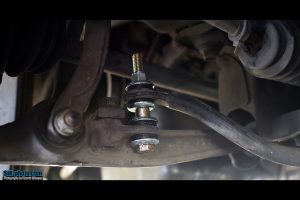 When it comes to reliable rubber bushings, Manufacturer’s Rubber & Supply offers a wide variety of high-quality standard bushings as well as custom bushings that can be tailored to your specific needs. Bushings are extremely versatile and are used across many industries. When customers are researching the best material for their bushings, we often get asked which material is better for bushings: polyurethane or rubber. Like so many things in life, it really all depends on the application. Let’s begin with what each material consists of and then dig into some why one material may outperform the other.
When it comes to reliable rubber bushings, Manufacturer’s Rubber & Supply offers a wide variety of high-quality standard bushings as well as custom bushings that can be tailored to your specific needs. Bushings are extremely versatile and are used across many industries. When customers are researching the best material for their bushings, we often get asked which material is better for bushings: polyurethane or rubber. Like so many things in life, it really all depends on the application. Let’s begin with what each material consists of and then dig into some why one material may outperform the other.
How Rubber Meets the Road
Rubber is made of either a synthetic or naturally made material that in its natural form is an elastomer or polymer made up of many monomers. Natural rubber is collected from rubber trees (typically found in the Amazon and Southeast Asia) via the form of latex or rubber tapping. Once the latex has been harvested it is transported to large storage tanks to avoid damaging coagulation to the raw latex form. At this point, it is processed from this natural form into a concentrated product for further use as a final produced good. You may be surprised to learn that natural rubber actually accounts for less than 35% of all production of rubber.
The other 65% of rubber production is synthetic. Synthetic rubber is made from petroleum byproduct monomers that are combined with other monomers (in various configurations) that result in a wide range of properties. It is this variability that has made synthetic rubber more commonly used over its natural rubber counterpart. One industry that really relies on this product is the automotive industry, for car tires, hoses, belts, seals, and so much more.
Does Polyurethane Stack Up
Polyurethane is a relatively new product, dating back the mid-1930s. The product’s end result is also used across industries, specifically in the creation or manufacturing of foam. Both closed and open cell foams are used in the manufacturing of mattresses and thermal insulation products. The two major components to manufacture polyurethane are isocyanates and polyols and it is made by mixing two or more liquid streams. Combined with other additives, the result is polyurethane.
In the case of the automotive industry, rubber by nature is the softer material allows the vehicle mounts to absorb vehicle vibrations and noise which may give rise to the notion that polyurethane makes the ride harsher when these mounts are replaced with polyurethane equivalents. In most cases, customers have noticed an increase in road vibrations due to polyurethane mounts but they have also stated this has decreased over time.
Polyurethane vs. Rubber Bushings: That is the Question
In most cases, rubber outperforms its rubber counterparts in replacement of bushings and mounts. The products will last longer, standing up to road debris, chemicals, oils, compression, and load. They will perform better by removing additional inconsistencies in suspension performance due to worn, damaged, or missing bushings. Nowadays you can buy complete bushing kits and replace all of the bushings in your vehicle at one time.
Photo Credit: Ricardo Velasquez

